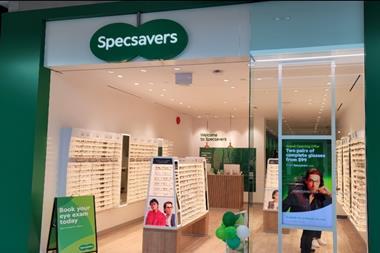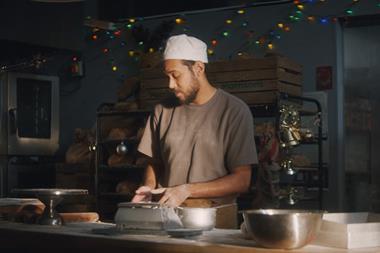Ever switched stations on the radio because of the music? Ever been tempted to walk out of a bar or restaurant because of its lack of melodic taste? Then don’t underestimate the importance of music in your stores.
Studies by teams of eminent researchers has proved it has the power to influence how long people stay in a shop, what they buy and, most importantly, how much they spend. And at a time when retailers are battling for every pound of shoppers’ money, it could prove crucial in increasing conversion rates.
One study has even claimed that if shoppers listen to music from a certain country, they will buy products associated with that nation. Sales of French and German wine were monitored in a large supermarket. When French music was played, sales of French wine soared and vice versa. Nicola Dibben, senior lecturer in music psychology at the University of Sheffield, says: “Afterwards, they had no idea the music had even been playing, which shows how important it can be to the overall atmosphere of the store.”
In another study, an off-licence played classical music and people bought more expensive bottles of wine. “It was about the association of classical music with social power and wealth,” explains Dibben.
Music can also affect the speed at which people shop. A fast beat will help move people around a supermarket to the checkout. The downside, though, is that they might browse less and therefore buy less. Certain tracks can even speed up the pace at which staff work. Envision Retail ran an experiment to measure the impact of music on staff during out-of-hours replenishment. Managing director Jason Kemp says: “If you play fast music relatively loudly, people work faster.”
In another experiment by music psychologists, customers in a then Sports Division store – since taken over by JJB Sports – were played different styles of music. Those who heard upbeat, fast-tempo music thought the shop’s atmosphere was “cool and modern”. Those who were in the same store when slow rock music was played deemed it “tired and dull”.
When you think that classical music is used in public places to deter groups of youths from loitering, it’s clear that music is recognised as having a dramatic effect on the human psyche. But that’s not to say retailers use it to best effect.
One pitfall is simply playing music far too loud. Noise levels are a particular nuisance around the till area. As Game head of marketing Lyndsay Westwood says: “It’s important that it’s loud enough to create a good atmosphere, but not so loud that customers can’t speak to the teams in the stores.”
Another mistake is entrusting the task of track selection to store staff. James Tansey, director at Auracle Sound, which selects music for brands, recalls one retail client that decided it needed assistance with its in-store music after its marketing director paid a visit to one of its stores that had a Polish manager. She could hear Euro pop blaring out to shoppers from halfway down the street. Even she couldn’t leave the store quickly enough, let alone the customers.
Michael Clark, managing director for sales and marketing of in-store music company Imagesound, says: “Some retailers have lost some of the control. Ultimately, you’re devolving a lot of responsibility down to a store colleague. You can’t let one person’s taste determine the music atmosphere because it can be as destructive as it can be beneficial.”
Former Radio 1 DJ Bruno Brookes has set up Immedia, which provides tailored in-store radio broadcasts. He says retailers often fail to recognise the importance of investing in good quality sound systems. “How can consumers be expected to engage with music that sounds like it’s coming out of a tin can on the ceiling?” he says. “There’s nothing worse than thinking you’re hearing something that’s so bad you would prefer to be listening to nothing at all.”
The specific type of music that should be played in a store depends on the customer profile, but there are some general rules to follow. One is to avoid simply playing present trends and chart music in the belief that your store will automatically seem contemporary, says Tansey. The effect of different types of music on the brain is far more complex.
Clark points to the example of using music to provoke nostalgia. “It’s an extremely good trigger that’s often used to help people relax. It creates a point of contact where people feel comfortable.” The most nostalgic period for women is those tunes they remember from when they were between 15 and 25 years old; for men, it’s between 15 and 30 years old.
Brookes explains that many people wrongly assume that the appropriate use of music is all about the age of your average customer. “It is, to a certain extent, but it’s far more about your attitude and mood,” he explains. He uses the analogy of going to a high street bank. “It’s a place you have to be, rather than a place you want to be, so the music needs to reflect that and it needs to make you feel better about being there.”
Another consideration is the local demographic. Simon Puryer, partner at Itim Consulting, points out: “If head office is controlling what music is being played, it needs to be mindful of how much it varies from one store to another. Without wanting to generalise too much, the music you play in, say Eastbourne, where there are likely to be more older people, will be different to the music you play in a busy store in central London.”
Songs also need to change constantly (not least for the sanity of the store staff). Anyone can create a playlist for their own party, but creating a playlist that is right for your shoppers at different times of the day for 52 weeks of the year is another matter entirely.
Retailers should also consider how in-store sound can add both brand and promotional value. Immedia produces live radio programmes heard in the stores of retailers such as Topshop and Game. In shops belonging to the latter, GameLive is broadcast to about 1 million customers a week. Westwood says: “Radio is a great way to boost the brand experience. It makes customers feel welcome and comfortable and creates more of an exciting atmosphere. Our research has shown that it is highly supported by customers and staff and, above all, it gives us a great point of difference.”
Brookes says it can also lift staff morale. “We can help bring different stores together on air. Staff can have their 15 minutes of fame, which helps motivate people,” he says.
Because music is a matter of personal taste, it is tricky to strike the right balance – particularly in stores with a wide customer base. Mike Rawling, store manager at Borders’ Birmingham store, says that, at every retailer, store staff are often stopped by customers because of the music. “People comment on it all the time, whether it’s too loud or too quiet; some people want classical music, others don’t. It’s difficult to please everyone.”
As Dibben says: “So many people have strong likes and dislikes. You risk either alienating them or playing music that’s so bland it becomes like wallpaper.” However, the important thing to remember is that store music is not always intended to be listened to, as such. Even at a subconscious level, when used well it can create an ambience that enhances the customer experience and drives sales. Get it badly wrong and your customers will be out the door quicker than you can press the standby button.
What’s playing in top london stores
Gap, Regent Street – Arctic Monkeys
Jaeger, Regent Street – R’n’B/soul vibe with male vocals
Ted Baker, Regent Street – Can’t stand me now by The Libertines
Karen Millen, Regent Street – chilled house, female vocals
Cos, Regent Street – soul/nu-jazz, such as Fading hours by Natalie Gardiner
H&M, Camden – Love is not a competition (but I’m winning) by the Kaiser Chiefs
Gap, Camden – Somebody told me by The Killers
JD Sports, Camden – deep house (loud)
Reiss, Regent Street – The Fratellis
Liberty, Regent Street – jazz
Sweaty Betty, Beak Street – Gilles Peterson
French Connection, Argyll Street – house remix of Dancing queen by Abba
Office, Carnaby Street – Mark Ronson’s remix of Toxic by Britney Spears
Guidelines on in-store music
Take control of what’s played in stores. Only then can a retailer maximise its investment.
Make sure you’re legal. Playing music in stores requires site licences. Because music on an iPod has been bought for personal use, using one in a store is illegal unless the relevant licence has been applied for under PPL, the UK broadcast royalties collection society.
Think about tempo – do you want it to match or contrast with the trading style/trading period? For instance, do you want to slow down or speed up your customers? Do you want to be perceived as busy when you are not or as a relaxed haven on a busy high street?
Compare texture and volume. Playing contemporary dance music at low volumes can be very annoying because the sound is often reduced to a low, bass-only drone. Classical or jazz tracks, on the other hand, often have wide, dynamic ranges of loud and quiet passages. Careful set-up of your store’s sound system is critical if these ranges are to be experienced to best effect.
It’s music to enjoy. If it makes you smile, it’s likely to do the same for your customers.
(Source: Imagesound)


























2 Readers' comments